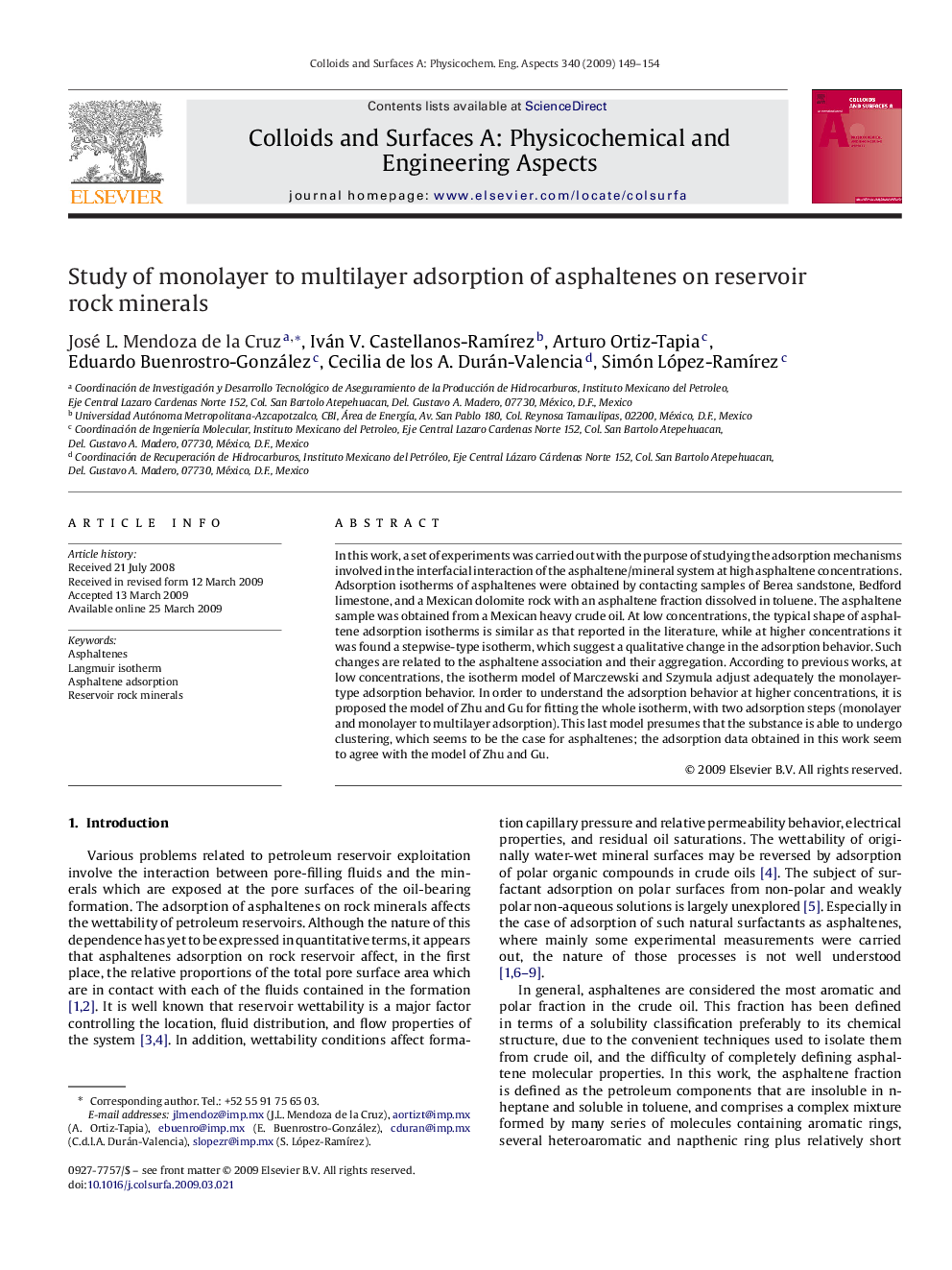| Article ID | Journal | Published Year | Pages | File Type |
|---|---|---|---|---|
| 596017 | Colloids and Surfaces A: Physicochemical and Engineering Aspects | 2009 | 6 Pages |
Abstract
In this work, a set of experiments was carried out with the purpose of studying the adsorption mechanisms involved in the interfacial interaction of the asphaltene/mineral system at high asphaltene concentrations. Adsorption isotherms of asphaltenes were obtained by contacting samples of Berea sandstone, Bedford limestone, and a Mexican dolomite rock with an asphaltene fraction dissolved in toluene. The asphaltene sample was obtained from a Mexican heavy crude oil. At low concentrations, the typical shape of asphaltene adsorption isotherms is similar as that reported in the literature, while at higher concentrations it was found a stepwise-type isotherm, which suggest a qualitative change in the adsorption behavior. Such changes are related to the asphaltene association and their aggregation. According to previous works, at low concentrations, the isotherm model of Marczewski and Szymula adjust adequately the monolayer-type adsorption behavior. In order to understand the adsorption behavior at higher concentrations, it is proposed the model of Zhu and Gu for fitting the whole isotherm, with two adsorption steps (monolayer and monolayer to multilayer adsorption). This last model presumes that the substance is able to undergo clustering, which seems to be the case for asphaltenes; the adsorption data obtained in this work seem to agree with the model of Zhu and Gu.
Related Topics
Physical Sciences and Engineering
Chemical Engineering
Colloid and Surface Chemistry
Authors
José L. Mendoza de la Cruz, Iván V. Castellanos-RamÃrez, Arturo Ortiz-Tapia, Eduardo Buenrostro-González, Cecilia de los A. Durán-Valencia, Simón López-RamÃrez,
